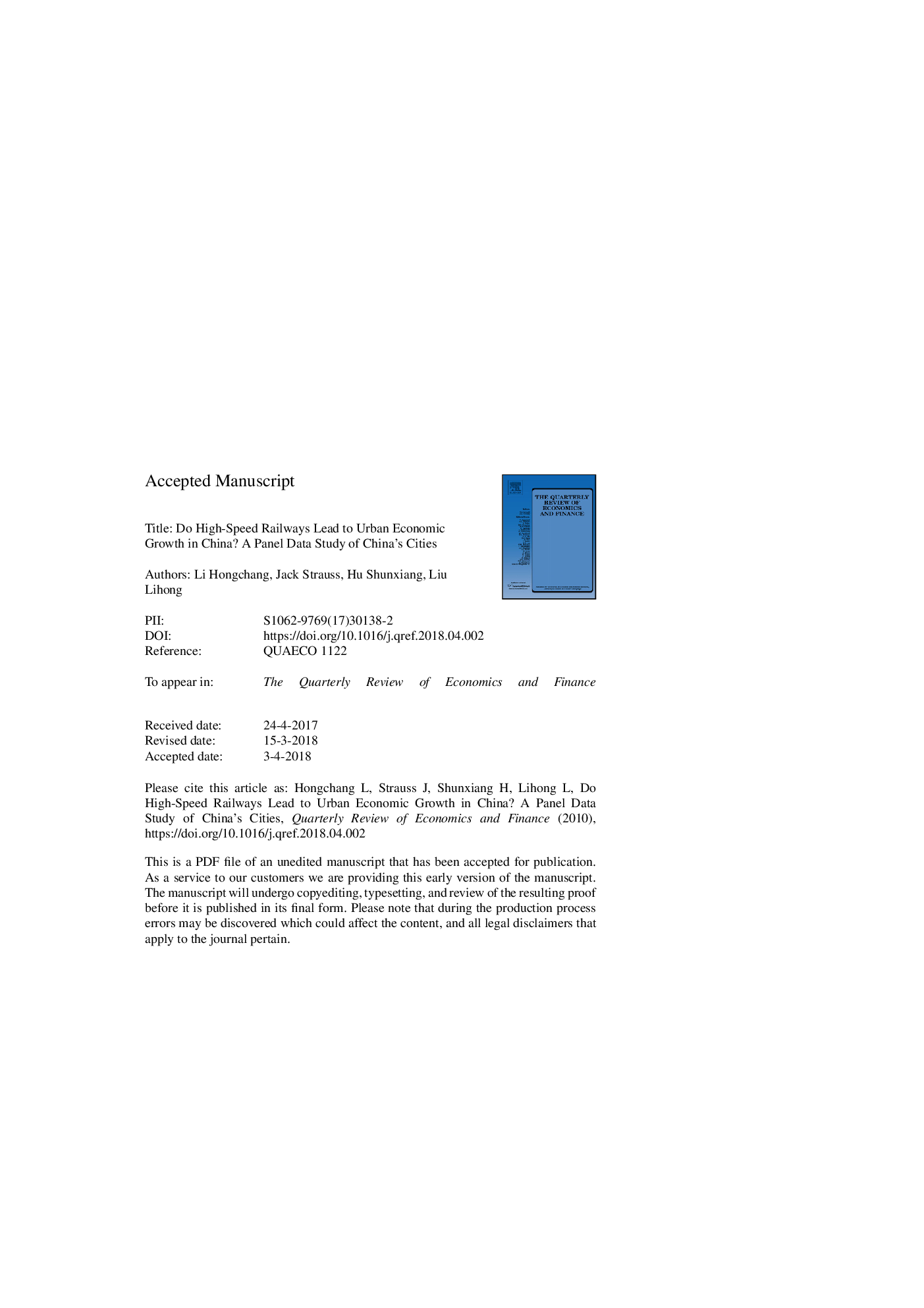| Article ID | Journal | Published Year | Pages | File Type |
|---|---|---|---|---|
| 7383223 | The Quarterly Review of Economics and Finance | 2018 | 51 Pages |
Abstract
This paper investigates the impact of high-speed railroads (HSR) on the economic activity of 200 Chinese cities using a new dataset from 2007 to 2014. We construct a measure of a city's accessibility, which is measured by weighted travel time, and then apply panel Granger Causality methods to determine whether an increase in accessibility contributes to future economic growth in China. Or does causality run the opposite way - does rising economic growth boost HSR? Results document that boosts in accessibility lead to significant and relatively large increases in city-level economic growth; further, out-of-sample methods document the importance of increases in HSR in forecasting city-level GDP growth. We also compare the benefits to the costs, and find that benefits of HSR in terms of boosting Chinese GDP substantially out-weigh HSR's large fixed costs, depreciation and subsidies.
Keywords
Related Topics
Social Sciences and Humanities
Economics, Econometrics and Finance
Economics and Econometrics
Authors
Hongchang Li, Jack Strauss, Hu Shunxiang, Lu Lui,
